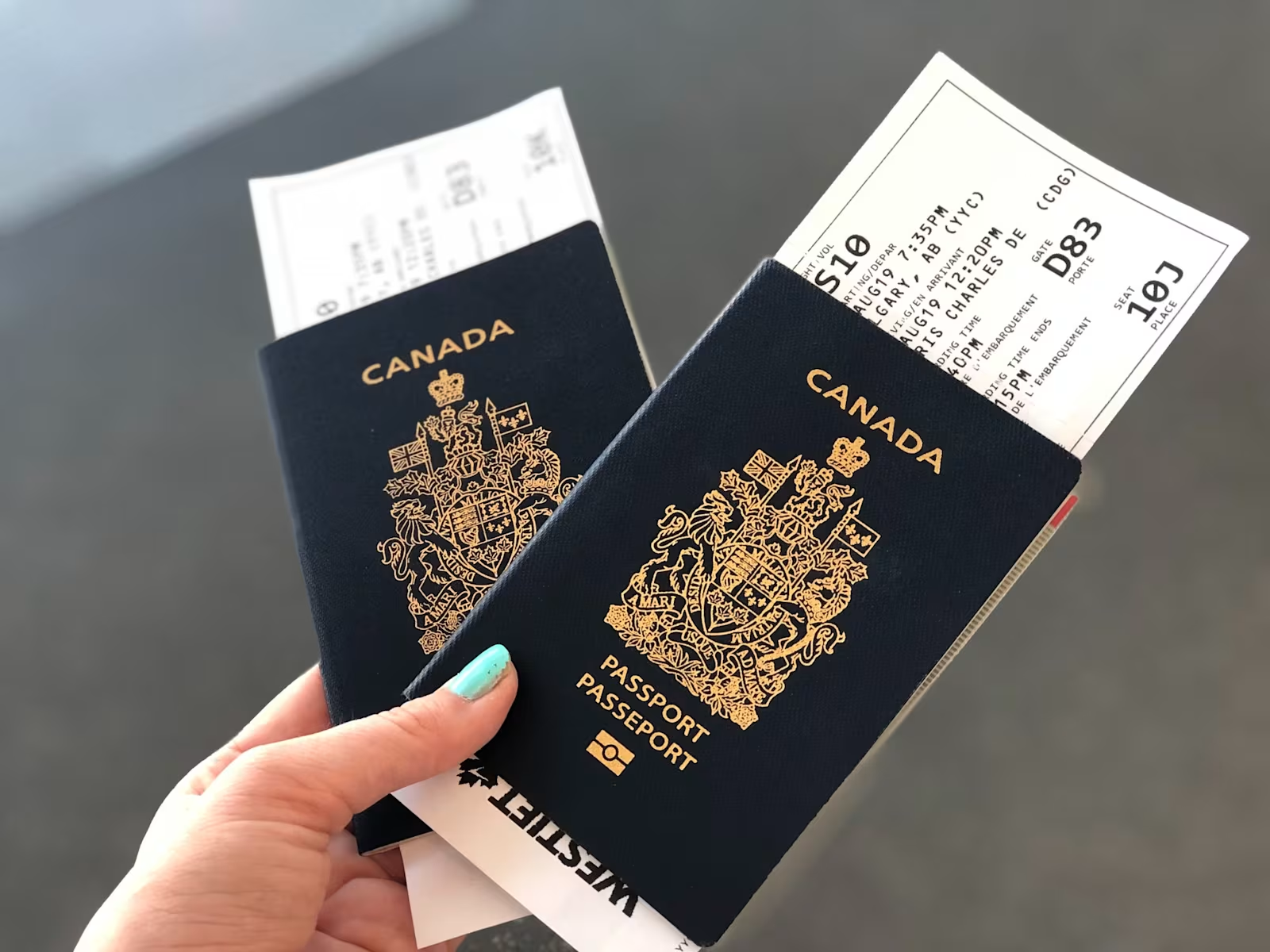Living in Canada: how does the Points System work?
Today, one in four people living in Canada belong to a cross-border ethnic group. This means that a quarter of the population has origins in Africa, Asia, the Pacific region and Latin America. According to the latest Canadian General Census on Social Identity in 2021, more than half a million people were counted with Latin American origins, mainly from Mexico and Colombia. The vast majority of this migration, whether from Latin America or other regions, is concentrated in urban areas or developed cities.
And this is no coincidence: according to Canadian government figures, in the last four years almost 100,000 Latinos were admitted as permanent residents; with Brazilians, Mexicans, Colombians and Venezuelans topping the list. A large number of these people seeking to migrate to Canada are professionals who have applied to a programme designed to attract skilled workers. It sounds logical, then, that they are concentrated in major cities such as Montreal, Vancouver or Québec City. But what does the Canadian Point System consist of? If you are exploring options for living in Canada, have a career and speak English, this information will be very useful to you. Read on and find out about the requirements and documents you need to meet to apply. The country of the maple leaf could be your next destination!
WorldRemit Content Team
• 5 mins read • Updated
What is the Canada Point system or *Express Entry*?
To be able to live and work in Canada is a very attractive option. It’s a large country, with a low population density and an excellent quality of life. Although more expensive than many Latin American countries, the cost of living becomes affordable once you have the income level of any national (if you want to know more about this, see our article on what is the cost of living in Canada). You can apply to Canada's Express Entry or Points System. Express Entry is a system implemented since January 2015 by the Citizenship and Immigration Canada (CIC) to process applications for permanent residency. To do so, a number of requirements have to be met, which are "scored" by a methodology that awards or subtracts points.
There are several categories to apply for the Comprehensive Ranking System:
Federal Skilled Worker
Canadian Experience Class
Applicants with a Provincial Nomination Certificate
Applicants to the Federal Skilled Trades Programme
Candidates with a job offer approved by the Canadian Department of Employment with a favourable opinion on the impact of their profession on the local market
Canada's Immigration Point System is the methodology used to assess the profiles of foreign candidates applying for Express Entry. Before starting to gather documentation, the recommended step before starting the process is to conduct a self-assessment. It's an exercise that will let you know how close you are to the maximum score. The test consists of a series of questions about your level of education, professional experience, proficiency in English and/or French (remember that in Quebec, French is the official language!), marital status and links to Canada. Our advice is that, in addition to having basic information about your work and academic history, you should have a language certification available (preferably IELTS or CLB).
The Points system for emigration to Canada isn't static: it's a kind of barometer of the internal situation of the country. The greater the need for skilled workers, the more lax the assessment becomes, as was the case during the beginning of the pandemic, when greater facilities were granted and the number of admissions soared. Being informed and up-to-date is always the best strategy!
Requirements to migrate to Canada under the Points system
The requirements for migrating to Canada through the Points system will vary depending on the type of CIC application you choose. Here, we will describe the main category for those who have had a Canadian job and want to transition to permanent residence: the Canadian Experience Class(CEC).
The CEC started as a programme for Immigration, Refugees and Citizenship Canada (IRCC) in 2008. The objective was providing an opportunity for temporary skilled workers and international students to stay legally and indefinitely. One of the great benefits of applying to the CEC is that, unlike the other CIC programmes for Express Entry, you do not have to demonstrate sufficient funds to be able to finance your relocation and stay.
The requirements for living in Canada with the CEC are:
Have, at least, one year of professional, skilled or technical work in Canada in the 36 months prior to the date of application
Meet or exceed a Canadian Language Benchmark (CLB) score of 5 for papers in categories NOC TEER 2 and 4, or a score of 7 for papers in categories NOC TEER 0 and 1
Residence and work plans must be outside the province of Quebec. Those wishing to reside and work in Quebec territory should review the application to Quebec Experience Class (QEC)
These conditions apply both to those who are currently within Canada, and to those who are applying from outside, within the aforementioned time frames. If the minimum requirements are met, the applicant is eligible to enter the Express Entry pool, who will receive an invitation from the Ministry of Immigration to apply for permanent residence.
How long does the Points system take?
It's not easy to give even an approximation of the average time it may take to obtain permanent residence through Canada's Points Based System. This is the point made in a series of interviews published by the BBC. In their article, they present two sides of the coin: on the one hand, Maria, a Colombian whose parents decided to start the process, took seven years to get an answer; and on the other hand, Arturo, a Cuban who moved to Quebec, had to wait less than a year.
What happens if the required score is not reached in the Points system?
Remember that, in addition to the requirements mentioned above, it's your level of education, marital status, professional background and language proficiency that will give you points. But what happens if you don't qualify for the invitation when you apply for the Points system to live in Canada? "Most people who are outside Canada don't get the necessary score to be invited to apply because they don't have graduate studies or a good command of languages," Vilma Filici, a lecturer at Seneca College in Toronto and a migration and refugee adviser told the BBC in an interview.
According to Filici, the ideal applicant profile is someone aged 29 or younger, with at least 6 years of work experience in qualified jobs, with a recognised postgraduate degree and with proficiency of English and/or French. It's possible to consider areas for improvement once this parameter has been identified. If you did not score enough points, you can focus on becoming certified in one of the two languages, as well as consider the possibility of migrating as an international student and then making the leap to a Canadian work experience.
Latinos in Canada: how many live in the country today?
According to the latest census, the number of Latinos in Canada is over 580,000, representing 1.6% of the population. Of this number, 40.7% come from South America, 31.9% from Central America and 4.2% from the Caribbean and Bermuda. The remaining 21% were born in Canada. The vast majority have Spanish as their mother tongue (78.8%) and are mainly concentrated in Montreal, home to almost 138,000 Latinos.
WorldRemit with migrants in Canada: we're here for you
If you're looking to migrate to Canada and the Points system or Express Entry are an alternative for you, you will certainly want to find an option to procure and care for your loved ones from afar. At WorldRemit we're here to help immigrants in Canada. We make it easy for you to send money from abroad, offering four methods of receiving it: phone recharge,bank transfer,cash withdrawal and mobile money. Learn the steps you need to take and how WorldRemit can be a useful tool once you're there, helping you send money to your loved ones or enabling them to send money to Canada in the quickest, easiest and safest way.
Do you want to know how?
This press release is intended for marketing purposes only and does not constitute or provide legal or investment advice.
Back to home
WorldRemit allows customers to stay connected and support their loved ones. Our Content Team plays an integral part in that. We celebrate the global community and help you to achieve your ambitions.





